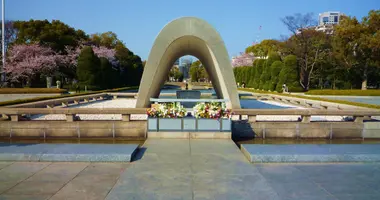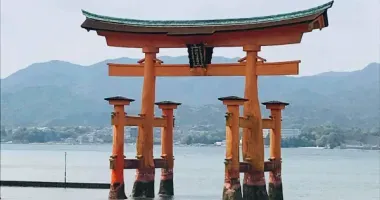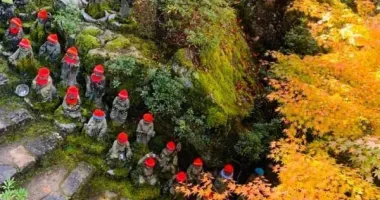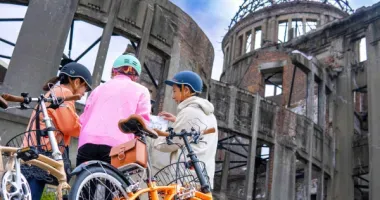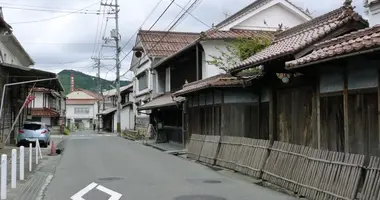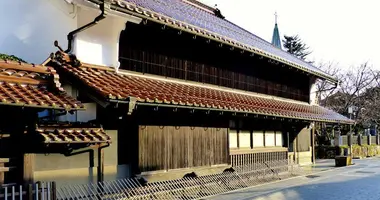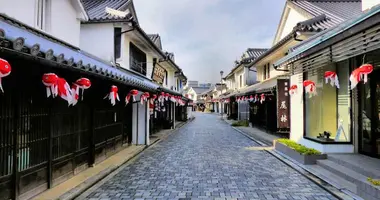Tsuwano Castle Ruins
Tsuwano Castle is now in ruins with only the stone walls in evidence but there are tremendous views from the castle over Tsuwano town.
Tsuwano Castle Ruins 津和野城
Jake Davies
Tsuwano Castle was a mountaintop castle 200 meters above the town that grew up below it in the mountains of western Shimane. Though no buildings, only stone embankments and walls, remain on top of the mountain, it is still pretty impressive and has wonderful views over Tsuwano town below and the surrounding countryside.
 Tsuwano Castle in Shimane Prefecture.
Tsuwano Castle in Shimane Prefecture. View from Tsuwano Castle in Shimane Prefecture.
View from Tsuwano Castle in Shimane Prefecture.
Tsuwano Castle History
The original "castle" was built here at the end of the 13th century during the Kamakura Period, though like most castles of this period it would more probably be called a fort in English as most of its structure was earthen ditches.
Tsuwano Castle was built by the Yoshimi clan who ruled the area for 14 generations and the castle's ideal location allowed it to withstand a hundred day siege in the mid 16th century. Fighting on the losing side at the Battle of Sekigahara (1600), the Yoshimi lost their land and moved to Hagi with the Mori clan.
Sakazaki Naomori took over and began the construction of much of the stonework that still remains on the mountaintop and greatly expanded and reinforced the castle. With no heir, upon his death in 1618 the Kamei clan took over. In 1686 lightning sparked a fire that burned down the keep (tenshu) and it was not replaced.
In 1854 another major fire destroyed many buildings. The only two structures still remaining today, the Babasaki and Monomi Turrets at the base of the mountain are believed to have been built after the fire. In 1866 in what is known as the Boshin War, Choshu forces marched through the valley below on their way to sack Hamada Castle. While ostensibly a supporter of the Tokugawa, The Kamei Lord ordered his men to stay in the castle and allow the Choshu free passage.
Tsuwano Castle was dismantled in 1873. The Taikodani Inari Shrine lower down the mountain was the private shrine of the lord, and did not become open to the public until the Meiji Period. The shrine protecting the castle was the Washibara Hachimangu Shrine at the base of the mountain to the north of the castle. This was where the samurai practiced horseback archery, yabusame, and is the site of the only traditional yabusame grounds remaining in Japan.
 Tsuwano Castle walls.
Tsuwano Castle walls. View over Tsuwano town from Tsuwano Castle.
View over Tsuwano town from Tsuwano Castle.
Tsuwano Castle
71-2 Shiroda, Tsuwano
Shimane 699-5605
Tel: 0856 72 1771
Admission: Free
The chair lift is open from 9 am to 4.30 pm 7 days a week, but from December through February is only open on weekends and national holidays. A return trip is 450 yen for adults, 400 yen for kids.
 Chair lift to Tsuwano Castle.
Chair lift to Tsuwano Castle.
Access To Tsuwano - how to get to Tsuwano Castle
Access to the castle ruins is best by the chair-lift located part way up the road to Taikodani Inari. There are paths from the Taikodani Inari Shrine and Washibara Hachimangu, but both are steep and the Washibara trail is overgrown and difficult to find.
From the top of the chair lift there is still a ten minute walk until the first castle structures are reached. The main section of the castle is open and grass covered and the remaining stone foundations give a good indication of how impressive the castle must have been, but most impressive are the views down to the town below and over the surrounding area.
Entry to the castle ruins is free.
 Autumn leaves at Tsuwano Castle, Shimane Prefecture.
Autumn leaves at Tsuwano Castle, Shimane Prefecture.

